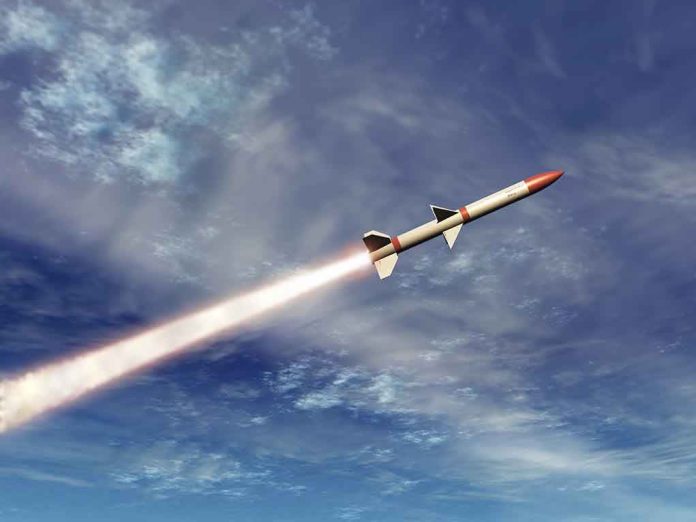
A new European innovation is set to challenge Russian drone dominance, promising a new era in defense strategy.
Story Highlights
- NAD’s Kreuger-100XR mini-missile offers a budget-friendly solution to combat drone swarms.
- The technology shifts focus from costly missiles to autonomous, mass-deployable defense systems.
- Planned trials in Ukraine will test the missile’s effectiveness in real-world conflict scenarios.
- European authorities have recognized NAD’s innovation, signaling potential for widespread adoption.
Revolutionizing Drone Defense with the Kreuger-100XR
A European startup, Nordic Air Defence (NAD), has introduced a groundbreaking mini-missile, the Kreuger-100XR, designed to autonomously intercept and destroy Russian drones. This innovation promises to alter the defense landscape by offering a cost-effective, scalable alternative to traditional systems. As drone warfare intensifies, particularly in Ukraine, the need for rapid response solutions becomes critical.
NAD’s Kreuger-100XR, capable of speeds over 220 mph, stands out with its football-sized, hand-launchable design, allowing for mass deployment. This marks a strategic shift from complex, expensive missile systems to affordable, autonomous solutions. The mini-missile integrates an onboard camera and optional warhead, emphasizing simplicity and scalability over traditional single-shot sophistication.
This innovative approach addresses the economic challenges of drone defense, reducing costs from hundreds of thousands to a few thousand dollars per unit. NAD’s selection as a finalist in the 2025 Frontex counter-drone contest highlights its recognition by European authorities. Trials planned in Ukraine will provide critical real-world testing, potentially validating its effectiveness.
Strategic Implications for Global Defense
The Kreuger-100XR represents a shift toward autonomous, scalable defense strategies. Its deployment could significantly enhance frontline capabilities while reducing defense costs for European and allied militaries. The democratization of air defense technology has far-reaching implications, allowing countries with limited budgets to enhance their security effectively.
Long-term, this innovation could disrupt the traditional defense industry, challenging established contractors like MBDA and Lockheed Martin. The focus on scalable systems aligns with the evolving needs of modern warfare, where speed and adaptability are paramount. As autonomous weapons development accelerates, the pressure mounts on legacy defense firms to innovate and reduce costs.
Expert Perspectives and Future Directions
Industry experts, including Jens Holzapfel of NAD, emphasize the tactical advantage of scaled, autonomous counter-drone swarms. The Kreuger-100XR’s speed and loitering capability provide a strategic edge in modern conflict. While proponents advocate for rapid adoption, some caution about the risks of autonomous weapons proliferation and the need for robust control systems.
The Kreuger-100XR could redefine the economy of warfare, offering a glimpse into the future of military strategy. As trials in Ukraine unfold, the world watches closely, eager to see the potential of this game-changing technology. The outcome could reshape not only defense strategies but also geopolitical dynamics.
A European startup is building these football-sized mini-missiles to destroy Russian droneshttps://t.co/3SEVUUKttl
— Sun5 (@55Sun5) November 24, 2025
As the defense landscape evolves, the Kreuger-100XR stands as a testament to innovation’s power in addressing modern challenges. Its success could inspire further advancements, driving the global shift toward more efficient, autonomous defense solutions.
Sources:
How Sweden’s Mini-Missiles Create a New Leverage Against Russian Drones





